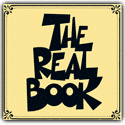Duke Ellington
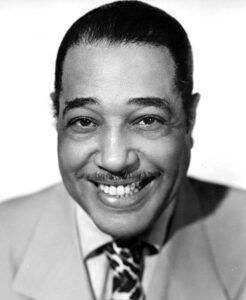
In the pantheon of jazz, few figures are as pivotal and influential as Edward Kennedy “Duke” Ellington. Born on April 29, 1899, Ellington revolutionized the world of jazz, morphing it from mere entertainment into a sophisticated, respected art form. This transformation was not incidental but the result of Ellington’s relentless innovation, his mastery of composition, and his extraordinary leadership as a bandleader.
Ellington’s significance in jazz history cannot be overstated. He was not just a bandleader but a visionary composer and pianist whose career spanned over five decades. His contributions were foundational in shaping the jazz genre as we know it today. Unlike many of his contemporaries who were confined within the boundaries of short-form jazz, Ellington dared to extend these boundaries, as evident in his pioneering work “Creole Rhapsody” from 1931, which was longer and more complex than most jazz pieces of the time.

Duke Ellington’s orchestra, established in 1923, became a platform for his expansive musical explorations. His ensemble was not just a group of musicians but a collective of extraordinary talent that Ellington skillfully directed to produce some of the most memorable jazz compositions of the 20th century. This period was marked by a blend of sophisticated arrangements, intricate group dynamics, and individual improvisations, which became a signature style of Ellington’s orchestra.
Ellington’s impact on jazz extends beyond his compositions. He was a key figure in the Harlem Renaissance, bringing jazz to the prestigious Cotton Club, and thereby, to a wider, more diverse audience. His music was a blend of the African American experience and artistic expression, contributing significantly to the cultural and social movements of his time.

Ellington’s work was not just music; it was a narrative of American history, woven through melodies and rhythms. He elevated jazz from dance hall entertainment to a respected, expressive art form. His music spoke of societal issues, reflected the joys and sorrows of his time, and resonated with a profound sense of humanity and artistic integrity.
Through his life, Duke Ellington epitomized not just the spirit of jazz, but also its ongoing evolution. His legacy is a rich tapestry of musical innovation that continues to inspire and influence musicians and composers around the world. In understanding Ellington’s significance, one comprehends the essence of jazz itself – a genre that is continuously evolving, yet firmly rooted in its original ethos.
Early Life: His birth, background, and early influences.

The story of Duke Ellington’s extraordinary life begins in the vibrant, culturally rich landscape of Washington, D.C., where he was born on April 29, 1899. Edward Kennedy Ellington, who would later be affectionately known as “Duke,” entered the world as the cherished son of James Edward and Daisy (née Kennedy) Ellington. His parents, both musically inclined, created an environment where young Ellington’s artistic sensibilities could flourish.
Ellington’s childhood was steeped in the middle-class values and musicality of his parents. His father, a talented pianist, and his mother, a fine singer, instilled in him not just a love for music but also a sense of dignity and elegance, which would later become hallmarks of his person. This nurturing environment played a pivotal role in shaping his early musical experiences.
Duke began playing piano at a tender age, an endeavor that initially didn’t captivate him. However, his natural talent and the cultural milieu of Washington, D.C., were instrumental in nurturing his growing passion for music. The city, with its vibrant music scene, provided a rich tapestry of African American culture and artistry that profoundly influenced young Ellington.
It wasn’t just his environment that shaped him, but also the people he encountered. Ellington’s early life was marked by mentors and musical influences that helped refine his talent. The sounds of ragtime, the emerging beats of jazz, and the classical compositions he encountered melded together to form the foundation of his unique musical style. Even at this early stage, the seeds of genius were evident; a young boy whose experiences in a bustling city at the turn of the century would eventually lead him to become a monumental figure in the world of jazz and beyond.
Musical Beginnings: His start in music and early career developments.
The musical journey of Duke Ellington, a beacon of jazz history, commenced in an era where the genre was blossoming into its golden age. Ellington’s early foray into music was not a mere steppingstone but a significant leap into a career that would redefine jazz. This journey began in the heart of Washington D.C., where young Ellington was surrounded by a thriving musical culture, a vital catalyst in his early development.
At the tender age of 18, Ellington’s professional music career took flight, spurred by the encouragement of a friend. This marked the beginning of an extraordinary path that would lead him to become one of the most celebrated figures in jazz history. His early career was a period of exploration and growth, where he honed his skills as a pianist and composer, playing in various ensembles and absorbing the diverse musical influences around him.
During these formative years, Ellington’s unique style began to take shape. He was not just playing music; he was living it, breathing it, and weaving it into the very fabric of his being. His early compositions and performances were characterized by a blend of ragtime, blues, and classical influences, a fusion that would become a hallmark of his later works.
Ellington’s ascent in the jazz world was not just a result of his musical prowess but also his charismatic leadership and ability to bring together talented musicians. This period of his life was not just about personal growth but also about laying the foundation for what would become one of the most renowned orchestras in jazz history.
As a young musician in a rapidly evolving musical landscape, Ellington displayed an uncanny ability to adapt and innovate. His early career was a testament to his dedication, creativity, and unyielding passion for music. This phase of his life set the stage for his later achievements, firmly establishing him as a pioneering force in the world of jazz.
Formation of the Duke Ellington Orchestra

The formation of the Duke Ellington Orchestra, a cornerstone in the edifice of jazz history, is a narrative of vision, timing, and artistic evolution. This extraordinary ensemble, which would come to redefine jazz orchestration, had its genesis in the vibrant cultural milieu of the early 20th century. The story of its formation is as captivating as the music the orchestra would eventually produce.
In 1917, a young Duke Ellington, brimming with ambition and musical ideas, formed his first band, “The Duke’s Serenaders.” This ensemble, though modest in its beginnings, was the first step in Ellington’s journey to orchestral greatness. The band played at various gigs, including dances and parties, allowing Ellington to experiment with and refine his style.
The pivotal moment in the formation of the Duke Ellington Orchestra came in 1923. This was when Ellington, having honed his skills and gathered a group of talented musicians, made a significant move to New York City. The city’s dynamic jazz scene provided the perfect backdrop for Ellington’s burgeoning talent and ambitions. It was here, amidst the Harlem Renaissance, that Ellington began to make a name for himself and his band.

By 1927, a significant milestone was reached. Ellington and his orchestra became the house band at the Cotton Club, one of Harlem’s most prestigious venues. This residency was a seminal moment, catapulting Ellington and his orchestra to national prominence. The broadcasts from the Cotton Club allowed listeners across America to experience the unique sound of the Ellington Orchestra, a blend of intricate compositions, improvisational genius, and unparalleled musicality.
The formation of the Duke Ellington Orchestra was not just about assembling a group of musicians. It was about creating a platform for musical innovation. Ellington’s leadership, his ability to spot and nurture talent, and his unerring commitment to musical exploration were instrumental in shaping the orchestra. Each member brought their own style and expertise, contributing to the orchestra’s distinctive sound that would captivate audiences and influence generations of musicians.
The Duke Ellington Orchestra became a symbol of jazz excellence, a testament to Ellington’s vision of elevating jazz to an art form. From the lively dance halls to the hallowed concert stages, the orchestra’s music resonated with the spirit of an era and the creativity of its leader. The formation of this legendary ensemble marked a defining moment in the history of jazz, setting the stage for some of the most innovative and enduring music of the 20th century.
Exploration of how his music style evolved over time
Duke Ellington’s stylistic evolution in jazz is a fascinating study of creativity and innovation. His musical journey from the 1920s through the mid-20th century mirrors the evolution of jazz itself, marked by a relentless pursuit of new sounds, techniques, and expressions.
In the early 1920s, Ellington’s style was deeply rooted in the hot jazz and ragtime popular during that era. His compositions were characterized by their rhythmic drive and the brilliance of his piano playing, setting the foundation for his musical exploration. However, it was in the late 1920s and early 1930s, during his tenure at the Cotton Club, that Ellington’s style began to significantly evolve. Here, he began experimenting with more elaborate arrangements, blending the traditional jazz rhythms with more sophisticated harmonies and orchestration.
As the 1930s progressed, Ellington’s music became more ambitious and complex. He started to incorporate elements from various musical traditions, including classical music, into his compositions. This period saw the creation of some of his most famous works, which showcased his ability to tell stories and evoke emotions through music. His compositions were no longer just dance tunes but intricate musical pieces that conveyed a narrative or mood.
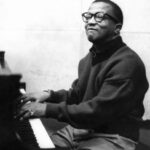
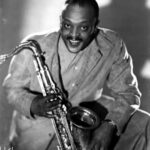
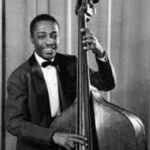
The 1940s and 1950s marked a period of further innovation for Ellington. His music from this era reflects a deeper, more introspective approach. The influence of bebop can be seen in his work, as he embraced more dissonant harmonies and complex rhythms. This period was also characterized by greater collaboration with other jazz greats such as composer/pianist Billy Strayhorn, saxophonist Ben Webster and bassist Jimmy Blanton, which further diversified his style.
Ellington’s later years were a period of synthesis and reflection, where he revisited earlier themes and styles, integrating them with the new techniques he had developed over the years. His music during this time was a rich tapestry that encapsulated the breadth and depth of his musical journey.
Throughout his career, Ellington’s style continued to evolve, yet it always retained its distinctiveness and elegance. His ability to adapt and innovate, while maintaining a strong connection to the roots of jazz, is what makes his music timeless and his influence on jazz history immeasurable.
Key Collaborations: Notable musicians and composers Ellington worked with.

Duke Ellington’s musical journey was marked by a series of key collaborations with some of the most talented musicians and composers of his era, each bringing their unique artistry to his ensemble. Apart from the previously mentioned Billy Strayhorn, Ben Webster, and Jimmy Blanton, there were several other notable collaborators who played significant roles in his orchestra and in the development of his sound. While he did release an album with John Coltrane, we are focusing on the collaborations here that shape the Duke Ellington sound and style.
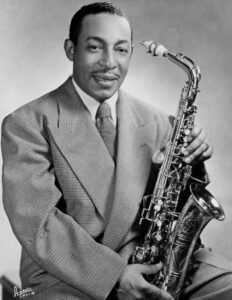
Johnny Hodges: A masterful alto saxophonist, Hodges was one of Ellington’s most important collaborators. His lyrical, expressive style was a defining feature of the Ellington Orchestra for many years. Hodges’ ability to convey deep emotion through his instrument made him a standout soloist in the band, contributing to some of the most memorable performances in jazz history.

Barney Bigard: A clarinetist known for his rich, woody tone and inventive playing; Bigard was a key part of the Ellington Orchestra for over a decade. His contributions are particularly notable in the swing era pieces where the clarinet played a central role in the orchestra’s sound.
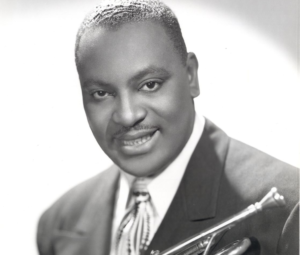
Cootie Williams: As a trumpeter, Williams was renowned for his growling “jungle” style. His unique sound added a raw, emotive quality to the band’s performances, especially in the earlier years of Ellington’s career.

Paul Gonsalves: Joining the band in the 1950s, Gonsalves, a tenor saxophonist, became famous for his 27-chorus solo on “Diminuendo and Crescendo in Blue” at the 1956 Newport Jazz Festival, which revitalized Ellington’s career. His energetic, boundary-pushing style brought a new dimension to the band’s performances during a critical time.
Each of these musicians, with their distinctive styles and exceptional talent, contributed to the multifaceted sound of the Duke Ellington Orchestra. Their collaborations with Ellington not only enriched his compositions but also left an indelible mark on the landscape of jazz music.
Major Compositions and Famous Songs
Duke Ellington’s repertoire is a treasure trove of jazz masterpieces, each composition a testament to his genius and innovation. His works are not just songs; they are narratives woven into the fabric of American music history. Highlighting his most significant compositions and famous songs provides a glimpse into the breadth and depth of his musical legacy.
Take the A Train: Perhaps Ellington’s most iconic composition, Take the A Train, is synonymous with his orchestra. This piece, with its catchy melody and vibrant rhythm, became the signature tune of the Duke Ellington Orchestra and is an enduring symbol of the swing era.
Mood Indigo: A sublime piece of artistry, Mood Indigo showcases Ellington’s skill in creating mood and atmosphere. This composition, with its melancholic undertones and sophisticated arrangement, is a masterpiece of emotional expression through music.
It Don’t Mean a Thing (If It Ain’t Got That Swing): This song encapsulates the essence of swing music and is pivotal in jazz history. It’s a vibrant, energetic number that remains a defining piece of the swing era and Ellington’s oeuvre.
Caravan: A collaboration with trombonist Juan Tizol, Caravan is notable for its exotic, Eastern-influenced melody. This composition stands out for its unique sound and showcases Ellington’s willingness to experiment with different musical style.
In a Sentimental Mood: A lush, romantic ballad, In a Sentimental Mood is a testament to Ellington’s ability to evoke deep emotion. This piece is a favorite among jazz enthusiasts for its lyrical beauty and emotional depth.
Cotton Tail: A faster-paced composition, Cotton Tail exemplifies Ellington’s skill in creating complex, yet accessible jazz tunes. The song’s energetic rhythm and intricate saxophone solos make it a standout piece in his catalog.
Sophisticated Lady: This composition is a masterclass in elegance and complexity. Sophisticated Lady, with its haunting melody and rich harmonies, reflects the sophistication and depth of Ellington’s musical vision.
Prelude to a Kiss: A beautiful ballad that showcases Ellington’s skill in crafting melodies that are both intricate and emotionally resonant. This song is celebrated for its romantic and soothing qualities.
I Got It Bad (and That Ain’t Good): This composition is a beautifully melancholic ballad that showcases Ellington’s ability to create deeply emotive music. The song, with its heartfelt lyrics and soul-stirring melody, has become a jazz standard, revered for its expressive depth.
Satin Doll: is another eminent composition by Duke Ellington, created in collaboration with Billy Strayhorn. Written in 1953, this jazz standard has become one of Ellington’s most celebrated pieces. It features a catchy, sophisticated melody that has captivated jazz enthusiasts for decades. The song was further enhanced by lyrics added by the renowned lyricist Johnny Mercer. The charm of “Satin Doll” lies in its smooth, elegant composition, embodying the refined and stylish essence of the jazz era. Its enduring popularity is a testament to the creative synergy between Ellington and Strayhorn, and its widespread appeal has led to numerous recordings by various artists over the years.
Ellington’s Impact on Big-Band Jazz

Duke Ellington’s impact on big-band jazz is monumental, a testament to his ingenuity and visionary approach to music. Ellington, one of the originators of big-band jazz, not only contributed to its evolution but also redefined its boundaries. His influence on this genre is both profound and far-reaching, setting a new standard for jazz orchestras worldwide.
Ellington’s contributions to big-band jazz were multifaceted. He revolutionized the genre by introducing a level of sophistication and complexity previously unseen. His arrangements were innovative, often featuring intricate interplay between different sections of the band. This was a departure from the more straightforward, homophonic approach typical of early big-band music. Ellington’s use of harmonies, rhythms, and textures was groundbreaking, adding a new depth and dimension to big band jazz.
Moreover, Ellington’s approach to composing and arranging was unique in that it was tailored to the individual strengths of his band members. He wrote parts that showcased their abilities, allowing each musician’s personality to shine through in the music. This personalized approach was revolutionary and contributed to the distinctive sound of the Duke Ellington Orchestra.
Ellington’s innovations also extended to the types of compositions he brought to the big-band format. He was not content with sticking to the standard dance fare of the day. Instead, he ventured into more ambitious territory, writing extended suites, symphonic jazz pieces, and even film scores. His willingness to experiment and push boundaries expanded the scope of what could be achieved within the big-band jazz formation.
Through these contributions, Ellington elevated big-band jazz from mere dance music to an art form worthy of concert halls. He demonstrated that jazz could be as artistically significant as classical music, thus changing the public perception of the genre. Ellington’s influence on big-band jazz is still felt today, as modern jazz orchestras continue to draw inspiration from his innovative techniques and compositions. His legacy in big-band jazz is not just in the music he created but also in the new possibilities he opened up for the genre.
Film and Stage Contributions:
Duke Ellington’s influence extended beyond the realms of jazz and big-band music, making significant inroads into film and theater. His contributions to cinema and stage were marked by the same ingenuity and flair that characterized his musical career. Ellington’s foray into these fields not only showcased his versatility as a composer but also enriched the artistic fabric of both cinema and theater.
In cinema, Ellington’s contributions were groundbreaking. He composed music for several films, bringing a jazz sensibility to the soundtracks of the silver screen. His work in this area was pioneering, as he was among the first to introduce jazz into film scores, a practice that would become increasingly popular in subsequent years. Ellington’s film scores often featured intricate arrangements and a blending of jazz with more traditional film score elements, creating a unique and captivating auditory experience. This innovative approach added depth and emotion to the films, enhancing the storytelling through his expressive music.
Ellington’s theatrical ventures were equally remarkable. He brought the rhythm and feel of jazz to the stage, composing for various theatrical productions. His ability to convey story and emotion through music made his compositions a perfect fit for the theater. In these productions, Ellington’s music was not just an accompaniment but an integral part of the narrative, driving the story forward and adding a layer of richness to the performances.
Through his work in cinema and theater, Duke Ellington bridged the gap between jazz and other forms of artistic expression. His contributions helped to elevate jazz, showcasing its potential as a versatile and sophisticated art form capable of transcending traditional boundaries. Ellington’s legacy in film and stage is a testament to his artistic genius and his ability to adapt his musical vision to different mediums, further cementing his status as a true icon of American art.
Some of the films he contributed to include:

“Paris Blues” (1961): Ellington composed the soundtrack for this film, which earned him an Oscar nomination. The movie, featuring jazz as a central theme, benefitted greatly from his authentic and rich musical score.

“Anatomy of a Murder” (1959): This film featured a score by Ellington, which is considered one of the greatest in the history of film jazz. The soundtrack added a unique, immersive element to the movie.

“Jazz Ball” (1958): Ellington contributed to this film, which is a reflection of his deep involvement in the jazz scene during that period.
Duke Ellington made cameo performance appearances in several films, adding a touch of his unique charm and musical genius. Some of the films in which he appeared are:

“Reveille with Beverly” (1943): This film featured Ellington and his orchestra, where they performed and added a jazz flair to the movie’s soundtrack.

“Cabin in the Sky” (1943): Ellington appeared in this film, which is notable for its all-African American cast and musical performances.


“Murder at the Vanities” (1934) and “Belle of the Nineties” (1934): These films also featured performances by Duke Ellington and his Orchestra, showcasing their musical talents in the context of cinematic storytelling.
Ballet and Theatre Productions:
Ellington was involved in writing music for ballet and other theatrical performances. His compositions for these productions showcased his ability to blend jazz with more classical forms of music, creating unique and captivating work.
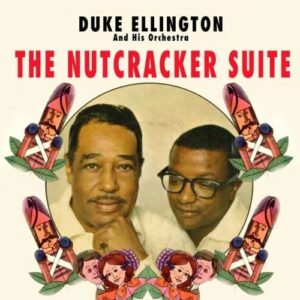
“The Nutcracker Suite”: This is a reimagined version of Tchaikovsky’s classic ballet, adapted by Duke Ellington and Billy Strayhorn. It transforms the traditional ballet into a jazz-infused performance, showcasing Ellington’s ability to blend classical music with jazz elements. The 2024 production by Ballet Afrique is one example of this adaptation.
“Duke!”: While not a direct involvement by Duke Ellington, there was a ballet featuring the music of Duke Ellington, performed by the Lincoln Center Jazz Orchestra. “Duke!” consists of three short ballets by different choreographers, connected by Ellington’s music, illustrating the versatility of his compositions in a ballet setting.
Duke Ellington contributed to several musicals throughout his illustrious career. Some of the specific musicals he was involved with include:
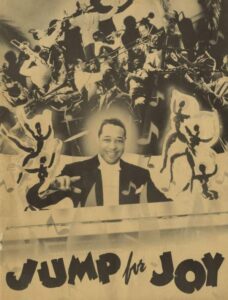
“Jump for Joy” (1941): This musical was an all-African American production featuring Ellington’s music. It was notable for its direct addressing of racial issues and stereotypes, making a significant impact both musically and socially.
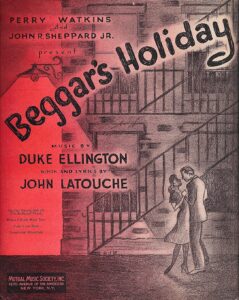
“Beggar’s Holiday” (1946): Ellington composed the music for this musical, which was based on the story of “Beggar’s Opera.” The show featured lyrics by John Latouche and was a blend of jazz, classical music, and popular song styles of the time.
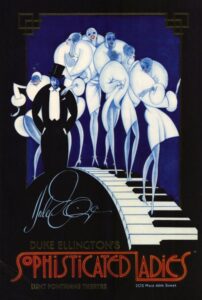
“Sophisticated Ladies” (1981): This musical revue was based on Ellington’s music and showcased many of his hit songs. It was a celebration of his work and had a successful run on Broadway.
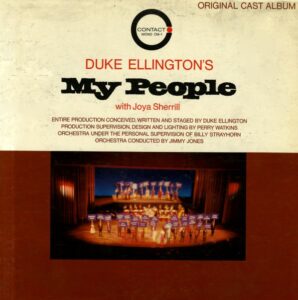
“My People” (1963): This production was created for the Century of Negro Progress Exposition in Chicago. Ellington wrote the score for this show, which celebrated African American history and culture.
Awards and Honors:
Duke Ellington’s extraordinary contributions to music were recognized with numerous awards and honors, underscoring his status as a musical legend. These accolades reflect the high esteem in which he was held in the world of music and beyond.
Grammy Lifetime Achievement Award (1966): This prestigious award was bestowed upon Ellington in recognition of his lifelong contributions to the music industry. The Grammy Lifetime Achievement Award is one of the highest honors in the music world, celebrating artists who have made significant artistic contributions of outstanding artistic significance to the field of recording.
Presidential Medal of Freedom (1969): Awarded by President Richard Nixon, this is one of the United States’ highest civilian honors. It recognized Ellington’s contributions to American culture through his music. The Presidential Medal of Freedom is awarded to individuals who have made especially meritorious contributions to the security or national interests of the United States, to world peace, or to cultural or other significant public or private endeavor.
France’s Legion of Honor: Ellington received this distinguished French order of merit for his extraordinary contributions to music and culture. The Legion of Honor is the highest French order of merit, both military and civil, and is awarded for excellent civil or military conduct.
Pulitzer Prize Special Award (1999, posthumously): This award was given to Ellington posthumously, recognizing his significant impact on music and culture. The Pulitzer Prize is an award for achievements in newspaper, magazine and online journalism, literature, and musical composition in the United States.
13 Grammy Awards: Over the course of his career, Ellington won a total of 13 Grammy Awards, a testament to his enduring influence and talent in the realm of jazz and beyond. His first three Grammy Awards were won for the 2nd Grammy Awards in 1959, including Best Performance By A Dance Band for “Anatomy Of A Murder.
Oscar Nomination for “Paris Blues” (1962): Ellington was nominated for an Oscar for Best Music, Scoring of a Musical Picture for the film “Paris Blues,” showcasing his talent in film scoring as well as music composition.
Later Career and Legacy
Duke Ellington’s later career was a period marked by relentless creativity and a profound influence on the world of jazz and beyond. As one of the greatest jazz composers of all time, Ellington’s contributions during these years solidified his status as an icon. Continuing to lead his band until shortly before his death in 1974, Ellington’s career spanned more than half a century, paralleling most of the documented history of jazz.
His later years saw him compose thousands of scores, many becoming jazz standards and integral parts of the genre’s repertoire. This prolific output over his 50-year career is a testament to his extraordinary talent and unyielding dedication to his art. Ellington’s influence extended far beyond jazz, impacting the broader landscape of popular music in the late 20th century. He revolutionized big-band jazz and was a master at expressing a wide range of emotions through his music.
Ellington’s legacy in jazz is monumental. His influence on classical music, popular music, and jazz itself cannot be overstated. He was not just a musician but a symbol of musical excellence and innovation. His unique contributions to music continue to be celebrated, and his work is studied by musicians and enthusiasts worldwide. Ellington’s career is not just remembered for the music he created but for the artistic boundaries he pushed, opening new possibilities for jazz and music as a whole.
Duke Ellington’s Discography: Early Years:
Here are some albums from Duke Ellington’s early years, showcasing the initial phase of his remarkable career:
- Black and Tan Fantasy (1927)
- Creole Love Call (1927)
- East St. Louis Toodle-Oo (1927)
- If You Can’t Hold the Man You Love (1927)
- Make Me Love You (1927)
- Hot and Bothered (1928)
- Jubilee Stomp (1928)
- The Mooche (1928)
- Mood Indigo (1930)
- Rockin’ in Rhythm (1931)
- It Don’t Mean a Thing (1932)
- Daybreak Express (1933)
- Sophisticated Lady (1933)
- In a Sentimental Mood (1935)
- Caravan (1936)
- Echoes of Harlem (1936)
- Diminuendo and Crescendo in Blue (1937)
- Conga Brava (1940)
- Cotton Tail (1940)
- Ko-Ko (1940)
- Jump for Joy (1941)
- Take the ‘A’ Train (1941)
- The ‘C’ Jam Blues (1941)
- Perdido (1942)
- Black, Brown and Beige (1943)
- Black, Brown and Beige (1946)
- Ellingtonia, Vol. One (1946)
- Liberian Suite (1947)
Duke Ellington’s Discography – The Middle Period:
These are albums from the middle period of Duke Ellington’s illustrious career, showcasing his evolving style and continued innovation in jazz:
- Masterpieces by Ellington (1950)
- Ellington Uptown (1951)
- Masterpieces by Ellington (1951)
- The Controversial Suite (1951)
- Ellington Uptown (1952)
- Duke Ellington Plays (1953)
- The Duke Plays Ellington (1953)
- Dance to the Duke! (1954)
- Duke Ellington and His Orchestra (1954)
- Duke’s Mixture (1955)
- Ellington ’55 (1955)
- Ellington Showcase (1955)
- Ellingtonia (1955)
- A Drum Is a Woman (1956)
- Blue Rose (1956)
- Duke Ellington Presents… (1956)
- Ellington at Newport (1956)
- Historically Speaking – The Duke (1956)
- This Is Duke Ellington (1956)
- Ellington Indigos (1957)
- Such Sweet Thunder (1957)
- Black, Brown and Beige (1958)
- The Cosmic Scene (1958)
- Festival Session (1959)
- Jazz Party (1959)
- Blues in Orbit (1960)
- The Nutcracker Suite (1960)
Duke Ellington’s Discography – The Later Years:
These albums are from the later years of Duke Ellington’s career, highlighting his continued creativity and influence in jazz:
- Piano in the Foreground (1961)
- Swinging Suites by Edward E. and Edward G. (1961)
- Duke Ellington & John Coltrane (1962)
- Duke Ellington Meets Coleman Hawkins (1962)
- Midnight in Paris (1962)
- Money Jungle (1962)
- Afro-Bossa (1963)
- Duke Ellington’s Jazz Violin Session (1963)
- The Symphonic Ellington (1963)
- Duke Ellington Plays Mary Poppins (1964)
- Ellington ’65 (1964)
- Concert in the Virgin Islands (1965)
- Ellington ’66 (1965)
- The Duke at Tanglewood (1966)
- The Far East Suite (1966)
- And His Mother Called Him Bill (1967)
- Soul Call (1967)
- Francis A. & Edward K. (1968)
- Second Sacred Concert (1968)
- 70th Birthday Concert (1970)
- New Orleans Suite (1970)
- Ellington ’71 (1971)
- The Afro-Eurasian Eclipse (1971)
- Latin American Suite (1972)
- Live at the Whitney (1972)
- This One’s for Blanton! (1972)
- Up in Duke’s Workshop (1972)
- Eastbourne Performance (1973)
- The Great Paris Concert (1973)
Duke Ellington’s life and career spanned a period of profound change in American music and culture. Born in 1899, Ellington saw the evolution of jazz from its infancy to a major art form. As a bandleader, composer, pianist, and cultural icon, he left an indelible mark on the world of music. His approach to jazz was revolutionary, blending improvisation with sophisticated compositions, and his influence extended beyond jazz to classical and popular music.
Ellington’s career was marked by relentless innovation and exploration. He composed thousands of pieces, including extended suites, film scores, and symphonic works. His ability to adapt to changing times and tastes kept him at the forefront of the music scene for over fifty years. Not only did he influence musicians, but he also played a significant role in breaking down racial barriers in the music industry, using his music as a form of social commentary and a tool for cultural change.
His legacy is seen in the enduring popularity of his compositions, such as “Mood Indigo,” “Sophisticated Lady,” and “It Don’t Mean a Thing (If It Ain’t Got That Swing).” These works have become jazz standards, covered by countless artists. Ellington’s impact on music is timeless, and his unique style continues to inspire musicians and delight audiences. His contributions to music and culture have earned him a place among the most important figures in American history, a legacy that will continue to resonate for generations to come.

